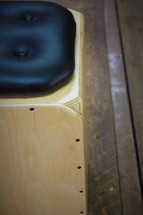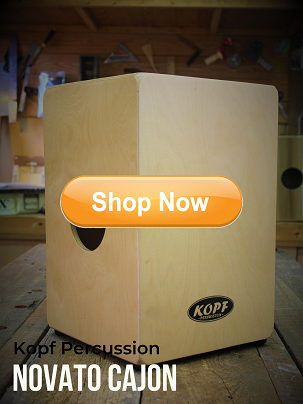Posted by Steve Head on 18th Apr 2023
How to Play Cajon : A Comprehensive Guide for Beginners
Are you interested in learning how to play cajon, the versatile percussion instrument that is widely used in different musical genres? Cajon playing is becoming increasingly popular among music enthusiasts, and it is easy to see why. It's portable, easy to play, and provides a great rhythmic foundation for any music style.
If you're a beginner and want to learn how to play cajon, then you've come to the right place. In this comprehensive guide, we will cover everything you need to know to start playing cajon, including its history, techniques, and some tips to help you get started.
History of Cajon
Cajon originated in Peru and was used as a substitute for drums by African slaves who were forbidden from playing their traditional instruments. Over time, the instrument evolved, and today it is widely used in Flamenco, Afro-Cuban, and other music styles.
Parts of Cajon
Before you start playing cajon, it's essential to understand its parts. Cajon has six sides: the front, back, top, and three sides. The front is the playing surface, and it's usually made of thin plywood or hardwood. The back is made of thicker plywood or hardwood, and it's the side that the player sits on.
The top of the cajon is where the soundhole is located, and the three sides are the two shorter sides and the longer side opposite the front. The shorter sides are typically used to produce higher-pitched sounds, while the longer side is used to produce lower-pitched sounds.
Techniques for Playing Cajon
Now that you understand the parts of cajon, let's talk about the techniques you can use to play it.
- Bass Tone: The bass tone is produced by striking the front panel in the center with the palm of your hand. This technique produces a deep, resonant sound that serves as the foundation for the rhythm.
- Snare Tone: The snare tone is produced by striking the front panel with your fingers near the top edge of the cajon. This technique produces a sharp, snappy sound that emulates a snare drum.
- Slap Tone: The slap tone is produced by striking the front panel with the fingertips of your dominant hand. This technique produces a high-pitched sound that can add a lot of character to your playing.
- Mute Tone: The mute tone is produced by placing your non-dominant hand on the front panel immediately after striking it. This technique is useful for creating a staccato effect or adding accents to your playing.
Tips for Playing Cajon
Here are some tips to help you get started with playing cajon:
- Practice with a metronome to develop your timing and rhythm.
- Experiment with different playing positions to find what's most comfortable for you.
- Use headphones when practicing to help you hear the nuances of your playing.
- Watch online tutorials and instructional videos to learn new techniques and styles.
- Play along with your favorite songs to develop your skills and learn new rhythms.
Conclusion
The Cajon is a fantastic instrument to learn, whether you're a beginner or an experienced musician. It's versatile, easy to play, and can add a lot of character to any musical genre. By following the techniques and tips outlined in this guide, you'll be well on your way to becoming a proficient cajon player. So grab your cajon, start practicing, and have fun!
Check out my next Blog post:


